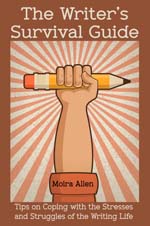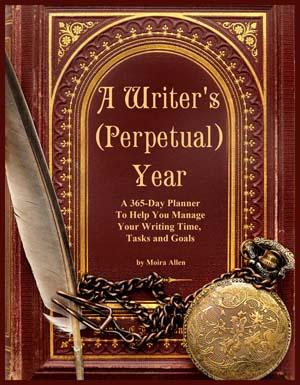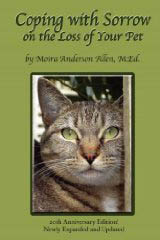 Your Guide to a Successful Writing Career
| |||
|
by Tami Krueger
There are possibly as many opinions about poetry as there are poets. Some poets insist that free verse is the only true form of poetry, while other poets may argue passionately that poetry isn't true poetry unless it adheres to the rules of form. I am a student of the school of thought that words, once shared, take form; thereby classifying free verse as a form. With that in mind, following is a short presentation of a few classic forms of poetry. After researching these Welsh forms, I tried my hand at them and found it to be an exhilarating exercise. I hope that those who read of these forms will try at least one for themselves.
The Cyhydedd Hir (Cuh-hee-dedd heer) is a poem of 16 lines comprised of two sets of eight line stanzas with two quatrains (set of four lines) each. The first three lines of each quatrain consist of five syllables, the fifth word of each line rhyming. The fourth line of the first stanza has four syllables and rhymes with the fourth line of the second stanza. Thus, the fourth lines are the main rhymes of the poem, while the other three lines are rhymes amongst themselves. The second set of quatrains contains a new rhyme at the end of line four, just as each quatrain contains a new rhyme for each of the three five-syllable lines above it. The formula is as follows: (s=syllable)
ssssa ssssa sssA ssssb ssssb ssssb sssA Stanza 2
ssssc ssssc sssB ssssd ssssd ssssd sssB How this formula works out in the form of a poem:
Plays smoothly along All that had gone wrong, Why didn't you flee? You've muffled the tune; The lie will end soon, A crying of loons From naked trees, Poison's easy pill At first made you ill, But you just sat still Awaiting death, Impotent, I cried Watching as you died, Fearing death had lied Near your warm breath.
The Terza Rima is another form of poetry that is obscure today. The form contains nineteen iambic lines in six stanzas. The first five stanzas have three lines each (tercets), while the sixth stanza has four lines (quatrain). The rhyme scheme is interesting in that the first stanza depicts the rhyming pairs of the second stanza, the second stanza dictates the rhyming pairs for the third stanza and so on. The rhyme scheme is a basic aba, with a twist in the stanza:
bcb cdc ded efe fgf g Honestly, I was overwhelmed when I first attempted to write a poem using this form. The method that I used to develop the poem was that I simply wrote out the rhyme scheme at the top of my paper and inserted rhymes in columns along the body of the page. After I found some rhymes that I liked, I began to get an idea of what the poem would be about. The first stanza that I wrote was actually stanza number two, below, for I already had "sky, man, and try," worked into the formula. After I wrote stanza #2, I began at number 1 and worked my way down to the final line in chronological order, using many of the words that I'd used in the formulating exercise, while also adding different ones. This form of poetry is challenging and fun to write. It may look simple, but I did find it to be more challenging than it appears to be. Below is my rough draft of a Terza Rima poem.
The maggot, chestnut and I; Living to ends under the mound, Nothing eternal under the sky, Is comprehended by man, Though each must, in their turn, try, Not paws of beasts nor human hand, Can bend the sand's finite line, Beyond the blood and water's land, Liquids recycled; a sign, That we are not merely guests, And this flesh is not solely mine, What evaporates, rains on the rest, And those born of blood bear blood; Recycling mankind's greatest quest; To resurrect from the flood, A life revolving around What some treat as simple mud, But is blood and water, I've found. Dante wrote the "Divine Comedy" using this form, Chaucer wrote "Complaint to His Lady" using the terza rima, and Lord Byron used it in "Prophecy of Dante."
The Englyn Milwr is toted as the soldier's Englyn, for it was usually set to a war theme. The Englyn Milwr is simple to construct, with each stanza consisting of three lines of seven syllables each. The end line of each line of the stanza will rhyme, and there is no limit to the number of stanzas in the poem. For example, the end words of each line in the first stanza may be end, friend, and send while the end lines of the second stanza may be coal, toll, and roll.
Starkly drawn remembered toils, Fiercely revealed canvas foils, Intercourse's most intimate kind, Sharing smudge's blended find, Oil and canvas soon entwine, My sweet friend I never knew, Before being touched by you, Of my brilliant, colored hue, Colorless void, substance none, Mirrored visions all and one, Clouds hiding the brightest sun, Pastels under my rough skin, You caressed fondly within, Blending a palette; love's kin. Though tackling new poetry forms can be intimidating, the thrill of accomplishing the task is exhilarating to an equal or even greater extent. One can possibly spend a lifetime searching for and attempting to revive the often-overlooked classics. Contemporary life is simpler than in the times of our ancestors, and even our poetry tends to lean towards simplicity. Classics are classic for a reason. Perhaps by seeking to experience them first-hand, we will learn why.
This article may not be reprinted without the author's written permission. Tami Krueger is a freelance writer living in Oregon, USA. She has had articles published in 18th Century History, and is a contributing author for the magazine Brandlady. She has authored one book of poetry and is currently spearheading a website that showcases historical female characters. |
| ||
| |||




